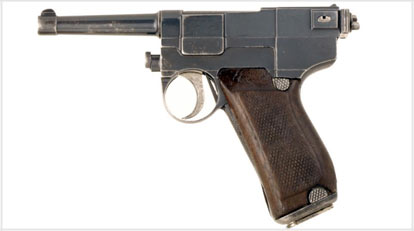A City's Understanding
Chapter 2: Infantry Weapon List
Previous Chapter Next ChapterThere were two families that designed most of the weaponry used by the Royal Army/Navy/Air Service. One was the renowned Nighton family that had generations of Royal Engineers, one of the most prominent being Wolf Nighton, a Royal Engineer and veteran of the First Desert War. The other family was the Sherwin family. The Sherwins did not originate in Anastasia, thus their designs were not readily accepted by the Royal Army. However, after numerous attempts, the Royal Army began to use them and the Sherwin family became a famous weapons manufacturer. There were other engineering families like the Bishops, but they were not as influential as the Nightons and Sherwins.
Nighton Revolver Carbine (Pieper m1893)
One of the earliest Nighton rifles, these carbines were used by tank crews in the Second Desert War. Its peculiar design made it stand out from the bolt-action rifles that covered the battlefield. These carbines were short and compact, with as minimal weight as possible. Outside of tank crews using them in emergency situations, they did not catch on like Nighton would have wanted. In response to this, it was spread elsewhere, including Lodona civilians. It had more success being a small game hunting rifle for Lodona hunters than it did being a standard issue carbine in the imperial forces. Because of this, it was a favorite by the Nationalists.

Bishop Trench Revolver (Carhone Revolver Carbine)
This odd weapon was designed by Francis Bishop. With the rise of trench warfare in the Desert Wars and the Arctic Fronts, trench guns were in high demand. Trench guns fired grapeshot ammo that could clear out enemy trenches easily. Several designs rose and fell with the new era of warfare. This was one such design. The Bishop Trench Revolver was based on the revolver pistols, but placed as a carbine and used grapeshot instead. It was a unique idea that the Royal Army latched onto. These guns, however, did not become exceedingly popular and were mainly used by shock troopers.

Samuel II Revolver Carbine (Colt Paterson No1 Carbine)
Henry Samuel, a native of Queensport in east Lodona, wanted to join the weapons industry. He wanted a weapon that could be used on the ships that ran along the seashore. Norseland pirates were still common in the northwest corner of Lodona's motherland, so there was still need for protection for commercial ships about the time of the First Desert War. So he decided to take the revolver shape and extend to something that could be used at a little bit longer range. He invented the revolver carbine. With instant funding from the Queen, Samuel could produce many of these. They never entered the Royal Navy nor the Royal Army, but they were popular among civilian sea transports. This weapon finally gave civilians a tool to combat Norseland pirates and the pirating slowed down, but was never completely gone.

Wolf Automatic Machine Gun (Huot Automatic)
The first weapon designed by Wolf Nighton for the Royal Sentinels. This was classed as a carbine, but fitted the appearance of a light machine gun. Since Sentinels carried so much armor in the battlefield, it seemed reasonable to make the weapon as light as possible and also easily reloaded. The Wolf Automatic Series II (Series I was too heavy and given to machine gunners to mount) became the standard weapon for Sentinels. It fired 300 rounds per minute and carried 45 round drum magazines that could be easily replaced. Since Sentinels often did "walk and fire" tactics, men would often accompany them with extra magazines, picking up empty ones to refill later. These weapons made Sentinels formidable at any range as they were quite accurate. It's reputation, along with its deep noise, earned itself the name of the "Wolf's Howl."
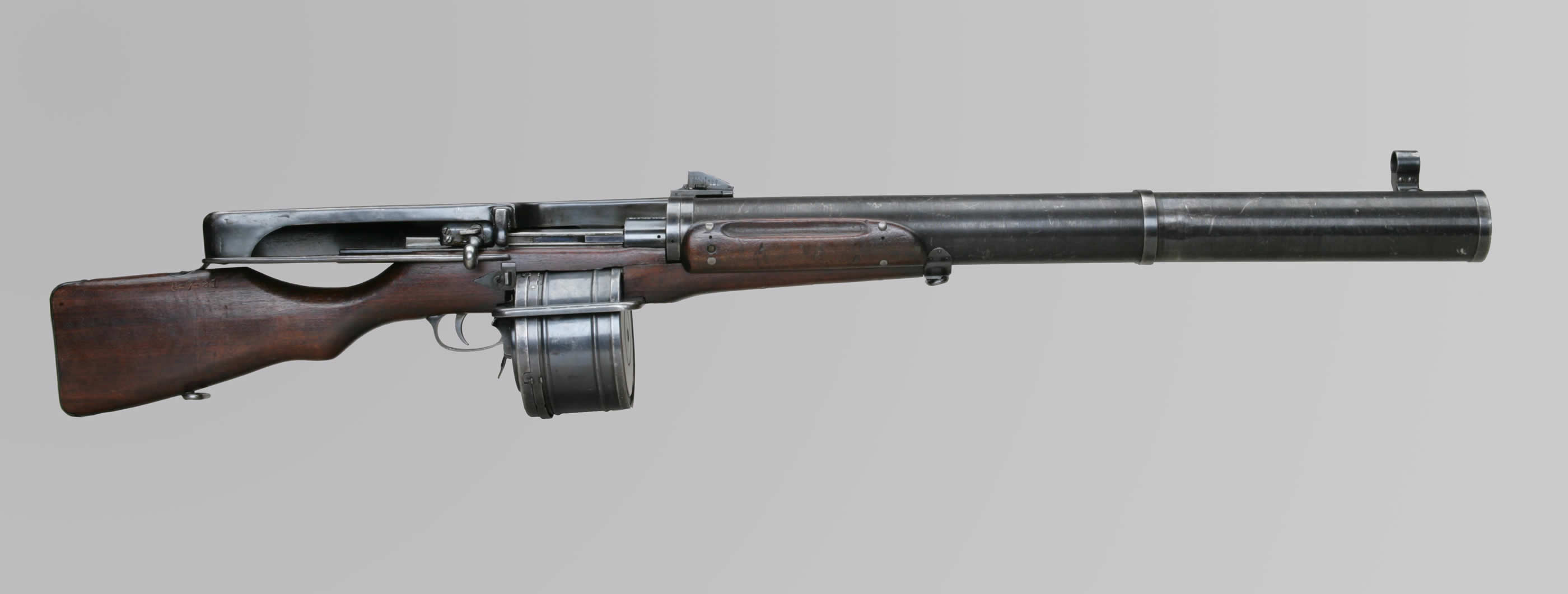
Martin Light Machine Gun (Chauchat)
The Martin Light Machine Gun was developed by Gregory Martin. It was the first handheld light machine gun to be used in warfare, seeing its debut in the First Desert War. The first models were not successful as the complicated parts often jammed or were easily broken. By the Second Desert War, newer, much better, models appeared, giving the Royal Army fantastic machine guns to use until the more favorable Wolf Automatics flooded the market. Due to their clumsy length and weight, they were never used by Sentintels, but by infanrty troops that used these to give their fellow soldiers suppressive fire. By the Third Desert War, however, there were much better light machine guns, thus it was removed from the military and sold to colonies. From the colonies, they were used by fringe colonial units until the beginning of the revolution, in which they were purchased by the Nationalists. This became the Nationalists main light machine gun.
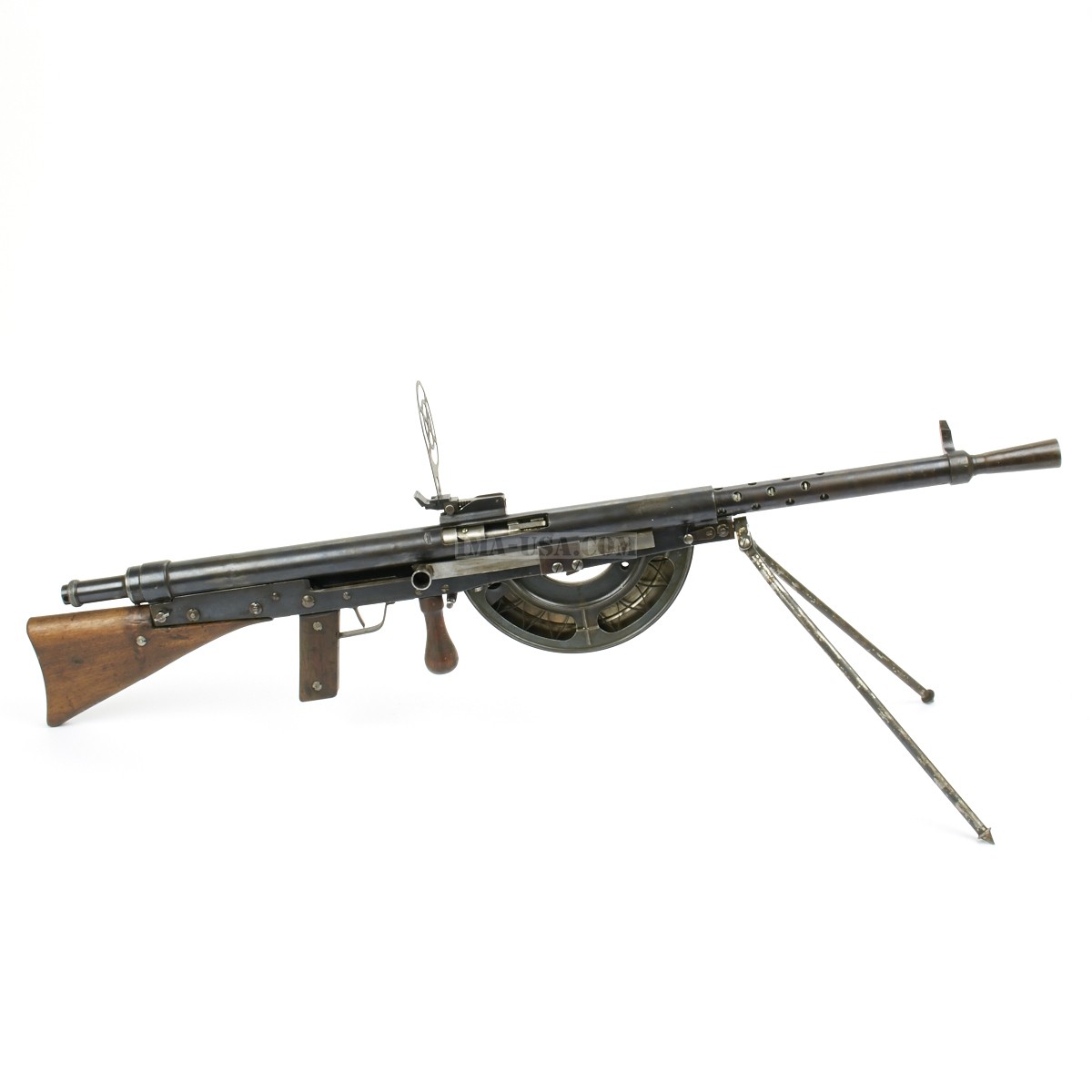
Williams Gun (Lewis Gun)
The Williams Gun was developed by Jeremy Williams and his wife from Queensport. It was first designed to be used as defensive weapons for commercial ships against the Norseland pirates. The Royal Army saw how effective it was and ordered it to be produced for the imperial forces. Williams took the offer and production for it began. The Williams Guns were often placed on tri-pods for use, but could be handled with hands alone. They were reliable and used widespread through the empire.
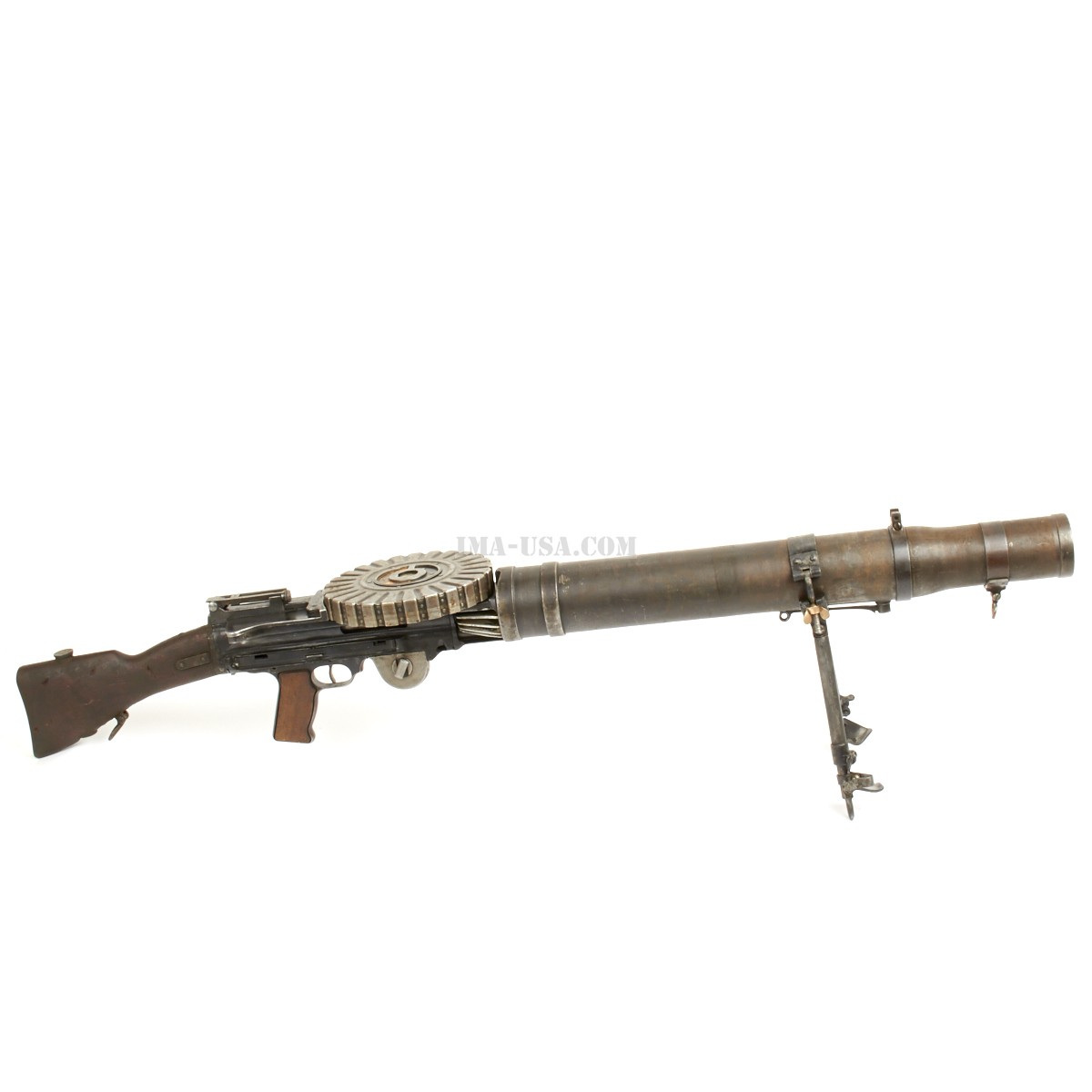
Lodona Standard Rifle (Gewehr 98)
The LSR is a bolt-action repeating rifle that became the standard rifle for Lodona forces in the First Desert War. It was not designed by either Sherwin or Nighton families, but a Heavenshire man named Albert Howardsworth. Howardsworth designed the rifle for long range combat scenarios and hunting sport. He wanted the rifle to be cheap, but extremely reliable. The first LSRs were fitted with iron sights that only began at 400 meters and went to 2000 meters. However, this was quickly changed when they saw initial combat as the battlefields were much, much closer. With the smooth bolt, the rifle could top at 48 rounds per minute. The Royal Army took it as the best bolt rifle in the world and it held up to that belief. By the revolution, it was still used by the Royal Army, but it was being beaten out by the Sherwin Automatic Rifle. Scoped versions of LSR rose in number during Desert War III, and it was a scoped LSR that Sarah Sommerset, the renowned Hallowed Sniper, used during the revolution to pick off Loyalist politicians.

Hellbringer Shock Submachine Gun (Hellriegal 1915)
To combat the Valkyrie shock troopers of the Confederacy, the Lodona military developed their own shock trooper force. Thomas Wight and Wolf Nighton helped create a submachine gun. They made the Hellbringer, a drum-magazine submachine gun that was quite heavy, but also quite accurate. They had 45-round magazines and fired at 550 rounds per minute. They were certainly ahead of their time. These submachine guns only saw use against the Confederate forces in Requiem, in which they liberated the colony for the final time until the revolution. Not many were made and the shock troopers were few in number. The shock troopers of Lodona became known as Hell Raisers after these magnificent guns.

Sherwin Automatic Rifle (Mondragon Rifle)
With the success of the LSR, the Sherwin family, most notably Royal Scientist Alexandra Sherwin, decided to try their hand at a standard rifle for the Royal Army. At the time, self-reloading weapons were becoming more prominent in the weapon society. Wanting to rid the Royal Army of single-action weapons, the Sherwins decided to create a self-reloading rifle. It took them several years and plenty of governmental investments, but they finally achieved success with the Sherwin Automatic Rifle. This rifle could fire at 250 rounds per minute, depending on one's trigger finger. It held a 20 round magazine of standard ammunition, which made them even more profitable as Lodona did not need to change its caliber from the LSR caliber. Because of its reliability and usability, it became the standard rifle for infantrymen by the time of the revolution.

Royal Guard Heavy Carbine (Lee Enfield)
Because of the Royal Guard's unique armor suits, they required unique weapons as well. With LSRs being too small for their massive gauntlets, they asked both Howardsworth and Nighton to make them a large carbine that could operate like miniature artillery. The Nighton family reluctantly helped with Albert Howardsworth to produce such a weapon. It took them 2 years to even design a bolt-action that could use massive bullets. However, they did it and created the Heavy Carbine, a weapon so fierce that it hardly needed an introduction. A large man could not carry this weapon around as it weighed 150 pounds without ammunition. It loaded 10 rounds of 20mm ammuntion, a caliber usually saved for vehicles. The first produced ones were bolt-action, but the Royal Guard found out that it was hard to operate the bolt with their armored gauntlets, thus making Nighton and Howardsworth head back to the drawing board. They simply changed the carbine to a self-reloading, which was easier due to its gigantic size. This weapon made the Royal Guard a true force to be reckon with.

Royal Dragoon Headhunter Rifle (Sharps Hankins Model Navy Rifle)
The Royal Dragoons, the main cavalry of the Royal Army, was becoming outdated by the Third Desert War. The horseriders became less and less frequent on the battlefield, being replaced by armored automobile units. However, some Dragoons simply adapted to the new warfare. They became stealth attackers, going on mile-long flank routes to surprise enemy backlines. During some missions on fringe colonies, Dragoons swept and took out rebel trading hubs by setting automobiles ablaze and picking off the leaders in quick, agile fashion. So, to keep them relevant, they needed a new weapon. A man Calvin Krissin, a nobleman from northern Lodona, was up for the task. Krissin took the designs of older navy sailor rifles and made them lighter and easier to reload. The Headhunter Rifle was born. It was a single-shot, lever-action rifle, but its large cartridge and ease in reloading helped Dragoons use it while riding. Beside the cavalry, the Headhunter rifle never took off elsewhere. It never was sold to civilians and never given to other nations. A few veterans of the wars used them for house protection during the revolution.

Royal Taylor Imperial Trench Gun (M97 Trench Gun)
First of its kind, this trench gun was not a revolver. Caroline Taylor, the much younger sister of Francis Bishop, decided to redo his trench revolver. Her design trounced his when it came out ten years later. It was more compact, less likely to get dirty, and much more reliable. At first, the Royal Army did not see use in the trench gun, as they already were biased against trench guns. They issued 15 Imperial Trench Guns to the troops in the Second Desert War. They were used successfully and the generals saw an opportunity to use them for charges at the Republican trenches. This was when Taylor's gun took off and became the standard trench gun for the Royal Army. It also became a commerical success to colonies and civilians. So both the Nationalists and the Royal Army used these guns in the revolution.
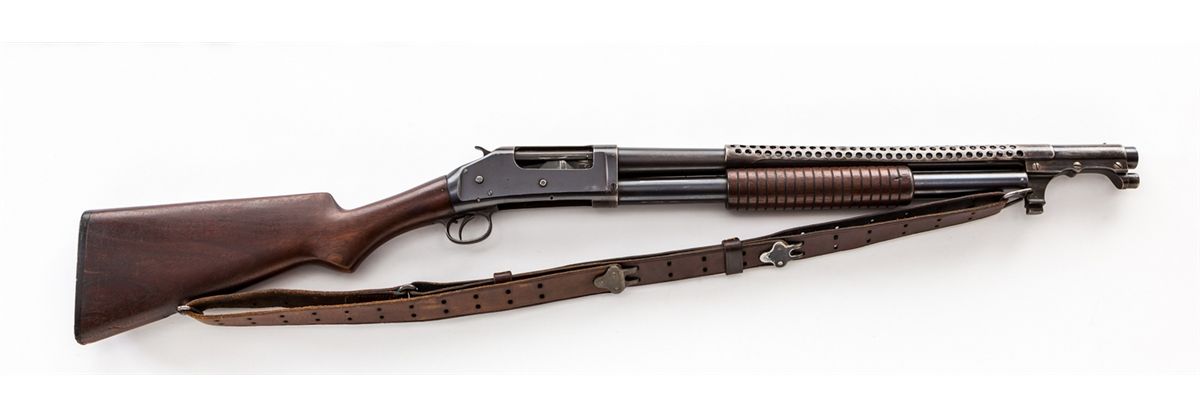
Royal Decree Sidearm (P08)
These pistols were designed by the Sherwin family. There was a very similar pistol designed by the Bishops that led to legal claims on who designed it first. It is still not certain, but the Justice Department gave the Sherwin family the credit, much to the Bishop's dismay. This sidearm was only commonly used by the Royals. It carried 8 pistol rounds and fired at a high rate. It was nicknamed "Toy Guns" by the common people as nobles who possessed them seemed proud of their little pistols and would carry them in plain sight as a symbol of wealth rather than a warning. It was however, almost ironic that these pistols were cheaply made and used cheap parts but were sold at great prices. More common pistols and revolvers fared better than these pistols but were frowned upon by the Royals for simply not being a great RDS pistol. Nobles learned the hard truth when the revolution started and Nationalist pistols outdueled the Toy Guns.
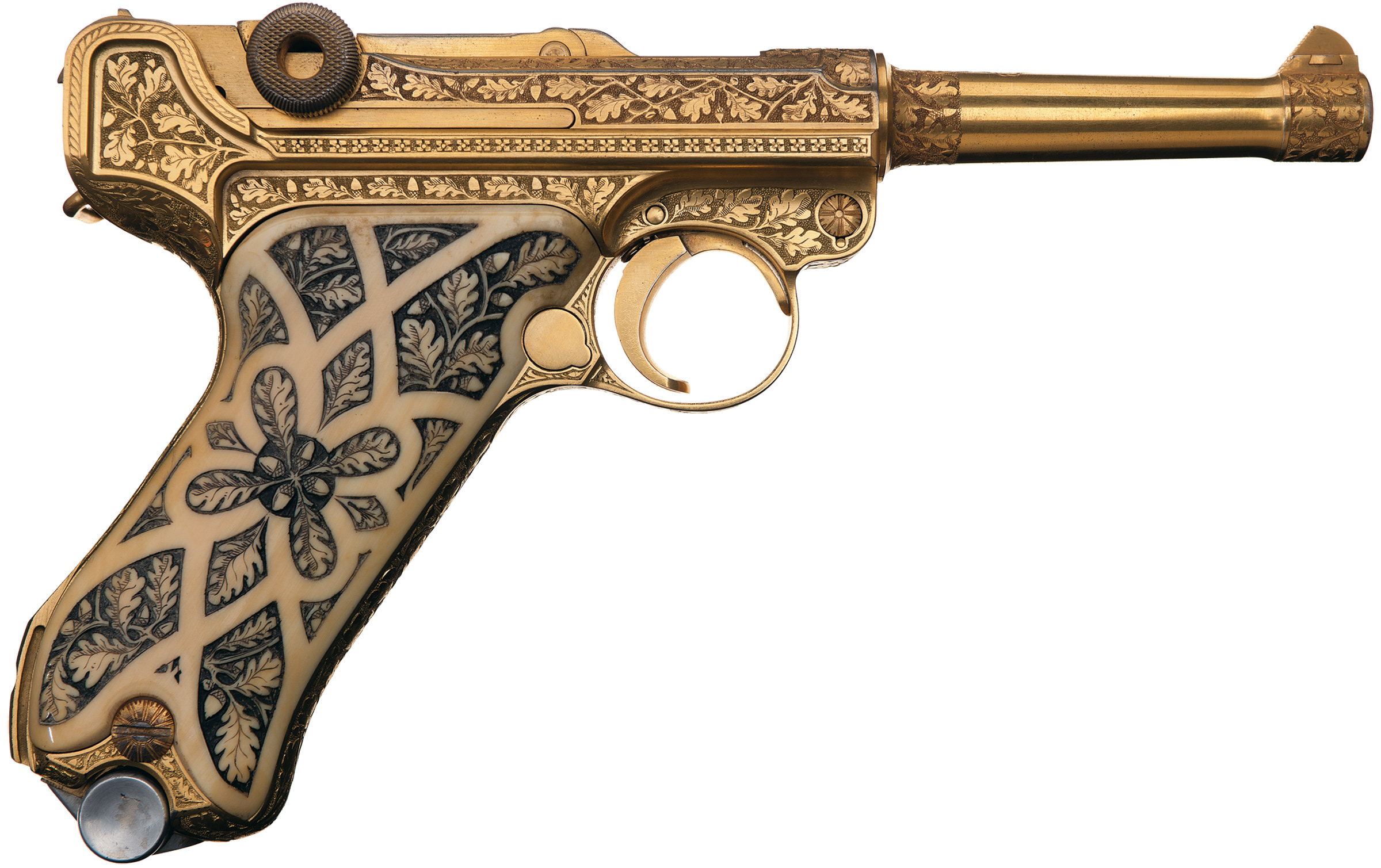
B-66 Automatic Pistol (Mars Auto)
The B-66 was a large cailber pistol designed by Royal Engineer Harry Bishop. He designed these pistols to be issued to tankers that operated in BAPTs. Since light tanks were often incredibly tight inside, they needed a small weapon with lots of stopping power. This pistol weighs 12 pounds and holds 12 rounds of rifle-size ammunition. Tankers were trained to hold B-66s with two hands before firing, as the kickback could injure an unsuspecting wrist. The Royal Army loved them and issued them to tankers as well as Sentinels. Upon seeing the success, the Royal Guards ordered an even large version to be made for them. Bishop did so and created the B-70 version, which used very large caliber rounds that could only be used by Royal Guard armored suits.
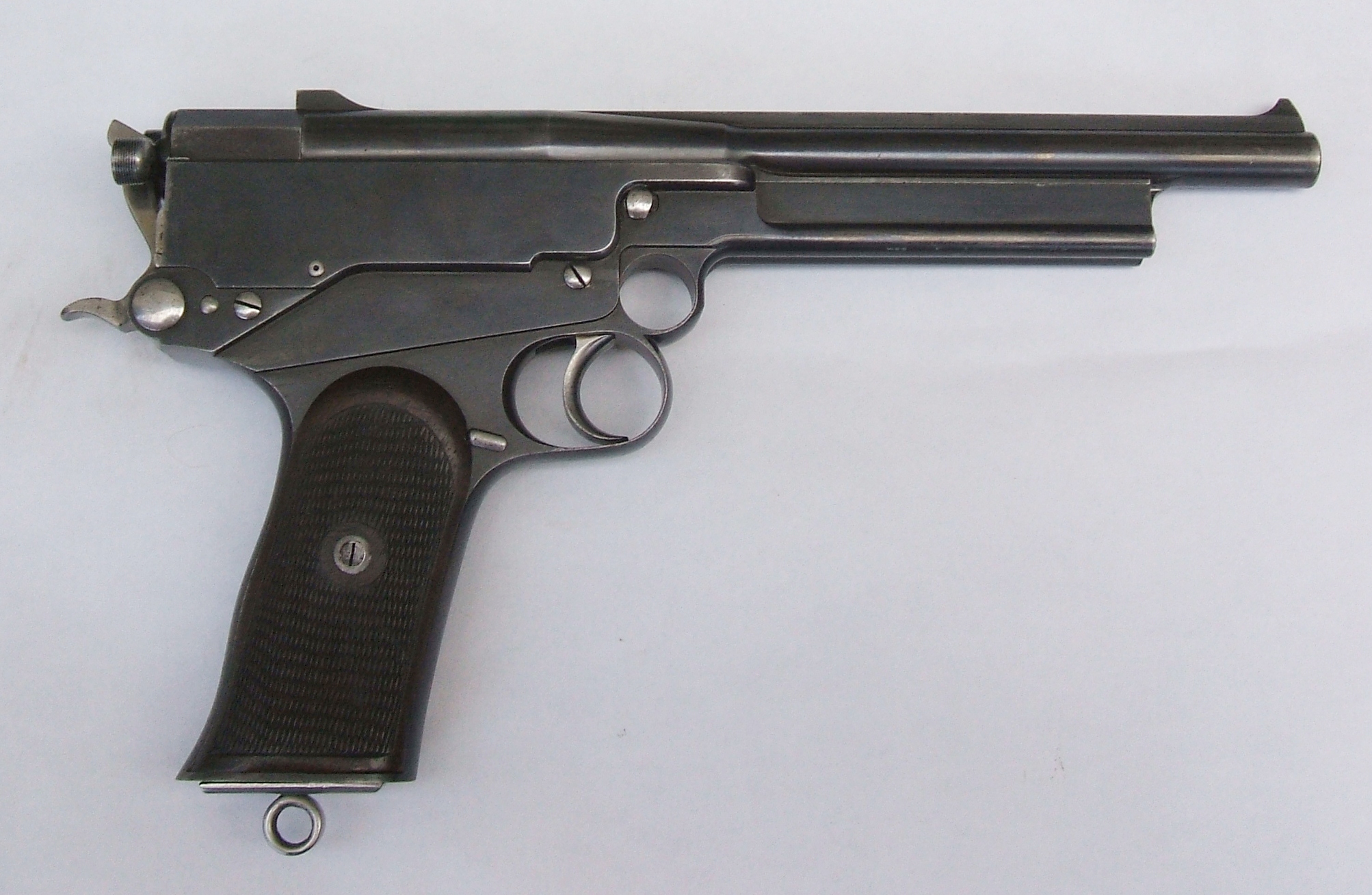
Sherwin Heavy Revolver (Carhone Revolver)
The Sherwins, after their mediocre sales of the Royal Decree, began looking at pistol designs by other manufacturers. They came across the Bishop Trench Revolver design and decided to use it to create a 20-shooter pistol. This became the Heavy Revolver that held large caliber rounds in a massive revolver pistol. This gun weighed 9 pounds fully loaded. Because of its size, it was not issued to normal infantry as it was painful to carry around with other supplies. So this weapon became an officer's signature. High-ranking officers would carry them around and could use both hands to operate them. It was a man's true weapon of war. Though it did not possess the dainty qualities of the Royal Decree, this gun held its own for brutality alone. Unlike the nobles who wished their weapons to look the part, the Royal Officers and commanders only cared for functionality. This revolver was quite functional.
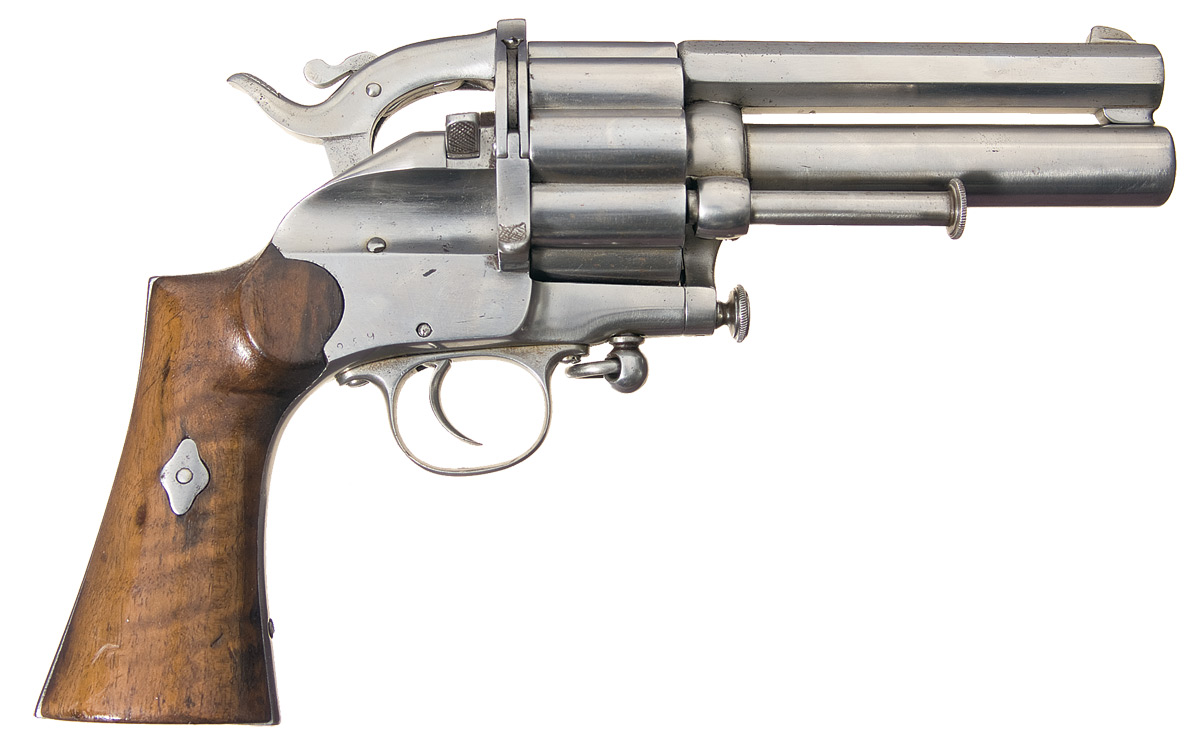
Wolf Automatic Pistol (C-96)
This was one of the finest pistols ever made. Though not the first automatic pistol in Lodona, it was certainly the best. Royal Engineer Wolf Nighton designed these pistols to be the standard sidearm in the Royal Army. He had created the designs long before he was appointed Royal Engineer. It was an instant success as it passed all its tests with amazing reliability and accuracy. It was mass produced in the Lodona factories and by the end of the Third Desert War, it was the standard pistol of infantrymen. It was also a success in Anastasia as Royal Officers and noblemen purchased them. Though not as stylish as the Royal Decree, it was an all-round much better pistol. Master Bell, Elysia's father, possessed one of these fine specimens.
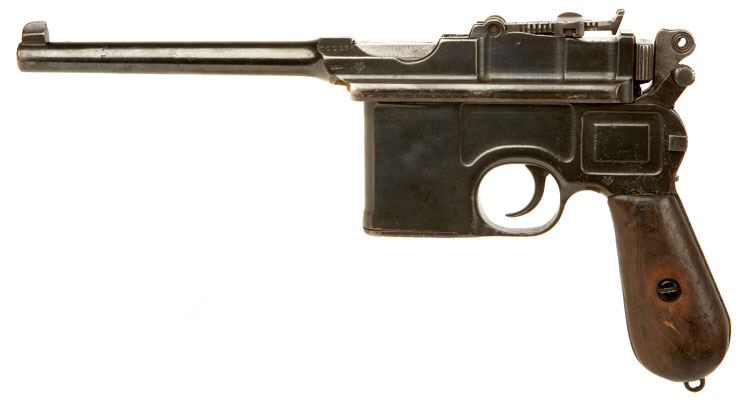
Heavenshire Revolver (No. 3 Revolver)
This revolver was made for cavalry units during the Colonial Wars. It was not designed by the reigning weapon families, but by a group of women in Heavenshire named the "Heavenshire Angels." The Angels designed these revolvers to be light-weight and quick to reload. Unlike previous revolvers at the time, these did not need percussion caps, thus taking a tedious step out of the reloading cycle. This fact alone made them a trusted sidearm in the Royal Cavalry. As time went on, they became less used as when Desert War I arrived, warfare had changed drastically. Revolvers became replaced with self-loading pistols, making these revolvers be sold in surplus to the Lodona citizens. As they were too "military" for purchase in Anastasia, they were mostly bought by Lodona countrymen. However, some merchant families did buy them. One merchant sold his revolver to a young Hondo Bell. Master Bell then gave this gun to his daughter Elysia, to use during the revolution.

Broadbrook Turret Repeater (Porter Turret Revolver Rifle)
William Broadbrook, a member of the Meadowland Arsenal Co. invented the "turret revolver." This was an odd concept as the usual parallel barrels were coming into play at the same time. However, what made this gun not rejected on the spot was how much it could hold, which is 16 rounds that could be fired in quick succession. Not only that, it was more accurate than the competing weapons. Using a lever, one could rotate the turret like a crank. So in a way, it operated like a lever-action rifle, but could hold twice as much ammunition. The only issue was that it was difficult to reload and the rotating mechanism could be easily damage with slight misuse. They did not prosper in the Royal Army and were instead sold to other imperial countries. The Nationalists obtained some of these repeaters, but preferred using other more modern weapons.

Requiem Bloodhound Pistol (Bergmann No. 5)
The Lodona colony of Requiem, a mostly valley colony that rested on the border between the Norseland Confederacy and the motherland of the Lodona Empire, shared in many small wars. Five times they were conquered by the Valkyries of the Confederacy and five times they were retrieved by the Royal Sentinels of Lodona. Requeim was home to several factories, of which a couple created weapons. One company that was stationed there was Bloodhound Armory. Edward McBaine financed this company for several years. They made their own unique pistols, which they used twice against the Norseland armies. They were not effective and many were destroyed in battle. The surviving ones were thrown to McBaine to use, which he did. When the revoultion began, he distributed the ones he had to the Nationalists and Unionists.
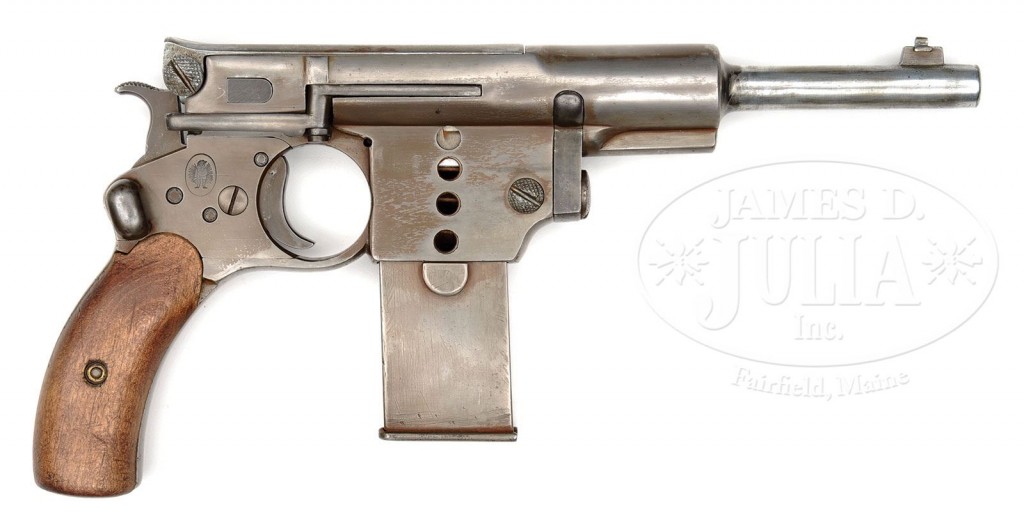
Queen Lauren Breech Rifle (Martini Henry)
This rifle was used by the Royal Army in the Colonial Wars. Being a high-caliber single-shot rifle, these weapons were easily mass-produced by the Lodona factories. Shockingly, it idea for such a rifle was conceived by a Royal Maid, Elizabeth Allsworth, who served Queen Lauren the Victor. In testings with other rifles, the Royal Engineers at the time were stumped on how to make it easier to reload single-shot weapons. Miss Allsworth famously said "Why not stick the bullet through the ass?" and that led to the invention of the breech-loading rifle. Queen Lauren was the first to fire this weapon, which led to its name as the Queen Lauren's Rifle. It is by far the most produced rifle in Lodona, still being used by militants at the time of the revolution, which took place 70 years since Miss Allsworth said that famous suggestion. Famous individuals used these rifles such as Queen Lauren and the more recent Charles Valentine, who used his father's rifle.

Nationalist Mabry Ordnance Lever Rifle (Russian 1895)
Jonathan Mabry, a former Royal Engineer, had these guns in stock even before the end of the Third Desert War. Because of a business failure and unpopular position with the Royals, Mabry could not get his guns sold. The Royal Army felt his lever-action rifles were outdated and even though they could easily be mass-produced, they were so ineffective that LSRs would still be better. With thousands of these rifles and no one to sell them to, Mabry was thrown out of the Royal Engineers. He became a recluse until he was contacted by Edward McBaine five years before the start of the revolution. McBaine offered to purchase his useless rifles. Mabry accepted even though the price was abysmal. With almost paying nothing, McBaine was now in possession of thousands of these rifles. By that time, McBaine was already anticipating a civil war in Lodona and so he kept them until the Nationalist Party came knocking on his door. He sold every one of the rifles to Valentine's forces across the entire country. To the Nationalists who never owned guns, these were the first weapons of war they ever used. Over 50,000 of these rifles were given to Nationalist troops, making it the most widely used weapon on the rebel's side, earning its name as the "Nationalist Ordnance Rifle."

Unionist's Secret Weapon: Garner Automatic (Springfield 1903 + Penderson Device)
Sabrina Garner, the leader of the Unionist Party after taking it by force from Isaac Benjamin, decided to make the Unionists an ally against the Loyalists in the revolution. Having most of the factories under her control, she decided to keep the workers in them to create a "secret weapon" that would make them win the war. With her own money, she hired Kendrick Loft to design a device that could turn bolt-action rifles to semiautomatic death machines. Being the genius he was, Loft did not disappoint and designed the Secret Weapon. However, he made the mistake of making the device unable to be used with LSRs or other popular bolt-action rifles. Thus he designed his own rifle based off of LSRs and Lady Garner named the weapon after herself, despite not helping at all with it. This made Garner Rifles actually not bolt-action at all and only appeared like one. They shot pistol cartridges in 40 round magazines. Because of all the mishaps, the Unionists tried to mass produce them, but could not. And along with the Royal Army preventing any metal from reaching them, they barely made enough to supply their small forces. It was announced a failure by Isaac Benjamin, but these weapons did see plenty of combat.
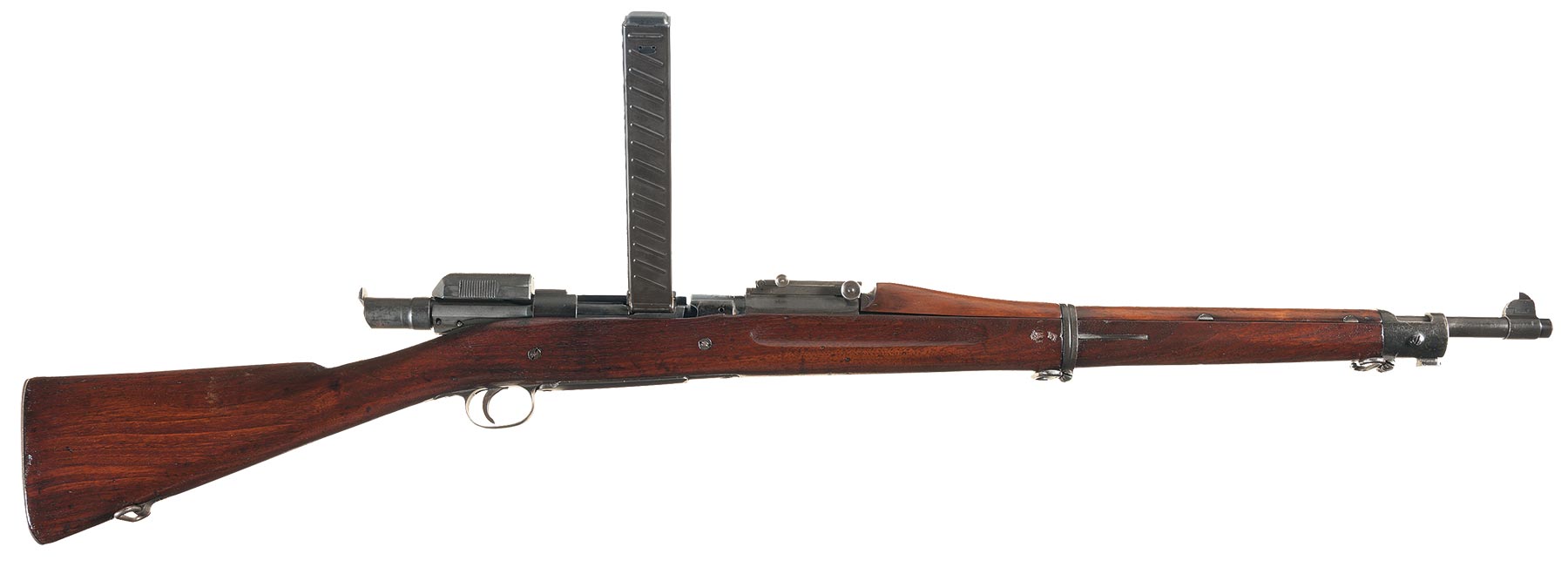
Republican People's Rifle (Arisaka Type 30)
The standard rifle for the People's Army was the People's Rifle. It was a simple bolt-action rifle that was very similar to the LSR, but longer and with a slightly larger cartridge. They were far less accurate than the LSR, but they were much cheaper and just as reliable. Because of the massive amounts of infantry in the People's Army, this rifle became the most produced rifle in the world. It was also the first rifle able to use special Heat Bullets that would explode on contact with armored surfaces. Because of its similarities to the LSR, Lodonans believed that it was the LSR and that the People's Army was simply using their weapons against them. To the trained eye, the differences could easily be seen, but to everyone else in Lodona, it was believed that only Lodona technology could keep the People's Army from buckling under Royal might, which was simply not the case.

Republican Iron Hand Automatic Rifle (Madsen 1896 Rifle)
The Iron Samurai of the Eastern Republics were mostly known for their long swords that they would use to slash through infantry, but they were not so primitive. Much like the Heavy Carbines of the Royal Guard, the Iron Samurai also had their own unique rifles that were larger than the rifles used by regular infantry. The Iron Samurai used Iron Hand Automatics terrorize enemies from afar. Nowhere near as big as the Heavy Carbines, these rifles still used large caliber rounds that fired at tremendous velocities, giving them a slight ability to pierce armor. They, like the People's Rifle, were able to use special Heat Bullets to hit armored vehicles. They were more expensive to create, so they were only made when needed and no excess was ever found.

Republican A-30 Long Rifle
These rifles were developed by a group of mechanical engineers in the Eastern Republics. It was designed with the goal of issuing these rifles as standard rifles for the People's Army. It did well in tests, but its small magazine and tight bolt made it impossible to use in real combat outside of sniper situations. So the People's Army instead gave it to special forces that would operate on the mountains in the Desert Wars. However, they had many more rifles than special forces. So the Eastern Republics gave the rest to any who would but them. Mostly civilians of the Eastern Republics did, but a few made their way into Lodona. Because of their fancy finish, those who bought them did not really use them as they also could not get the foreign ammunition cheaply. During the revolution, rich merchants on both sides used these rifles, believing they could snipe well, but never hit anything and ran out of the precious ammunition, making these rifles useless.

Republican Destroyer Rifle (Tankgewehr)
The RDR was a rifle made in response to the massive mechanization of the Lodona Empire in the Desert Wars. The People's Army, which was in the progress of mechanizing themselves, needed a way to defend their brigades from the onslaught of tanks and armored cars. Their genius engineers designed the Destroyer Rifle which fired explosive rounds that could easily penetrate armor plating. Because of their expensive qualities such as size and ammo, these rifles were given to specialized "Tank Destroyer" units. With these rifles now in the hands of Republican marksmen, Lodona forces started to use less straight attack approaches with armored vehicles, as the RDRs would devastate them. During Desert War II, Royal forces captured a RDR and recreated them for use against the now mechanized Republics.

Republican Guardian Sidearm (Bergmann 1896)
The Guardians, a military branch of the People's Army that used guerrilla warfare, had these weapons as their standard sidearms. They were heavy pistols that used large caliber rounds. They began use in the Desert War II when the Royal Army of Lodona pushed through Republican territory. The Guardians hid in the desert sands with these reliable pistols and could target officers in the back lines. These were the only Republican tools they used as they often would use Lodona-made weapons that they had seized from the ravaging imperialists. It became such a fearful weapon that the Royal Army dubbed it "the Bulldog."
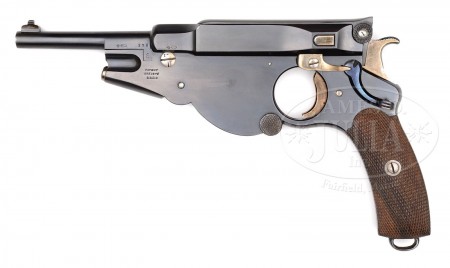
Norseland Kirkstrive Sidearm (Howdah Pistol)
The Norseland Confederacy were known for their large weapons, even for the pistols. Kirkstrive, an uncle of one of the Seven Lords, designed this pistol for the officials of the Confederacy to use. However, with the testings, the Army was interested in them as well for the battle officers and artillery operators. So this 4-barrel pistol was heavily used in Norseland combat by both infantry and artillery. It was one of the standard pistols of the Army of the Seven Lords. It was reliable, it was unique, it was perfect for the might of the Norseland forces.
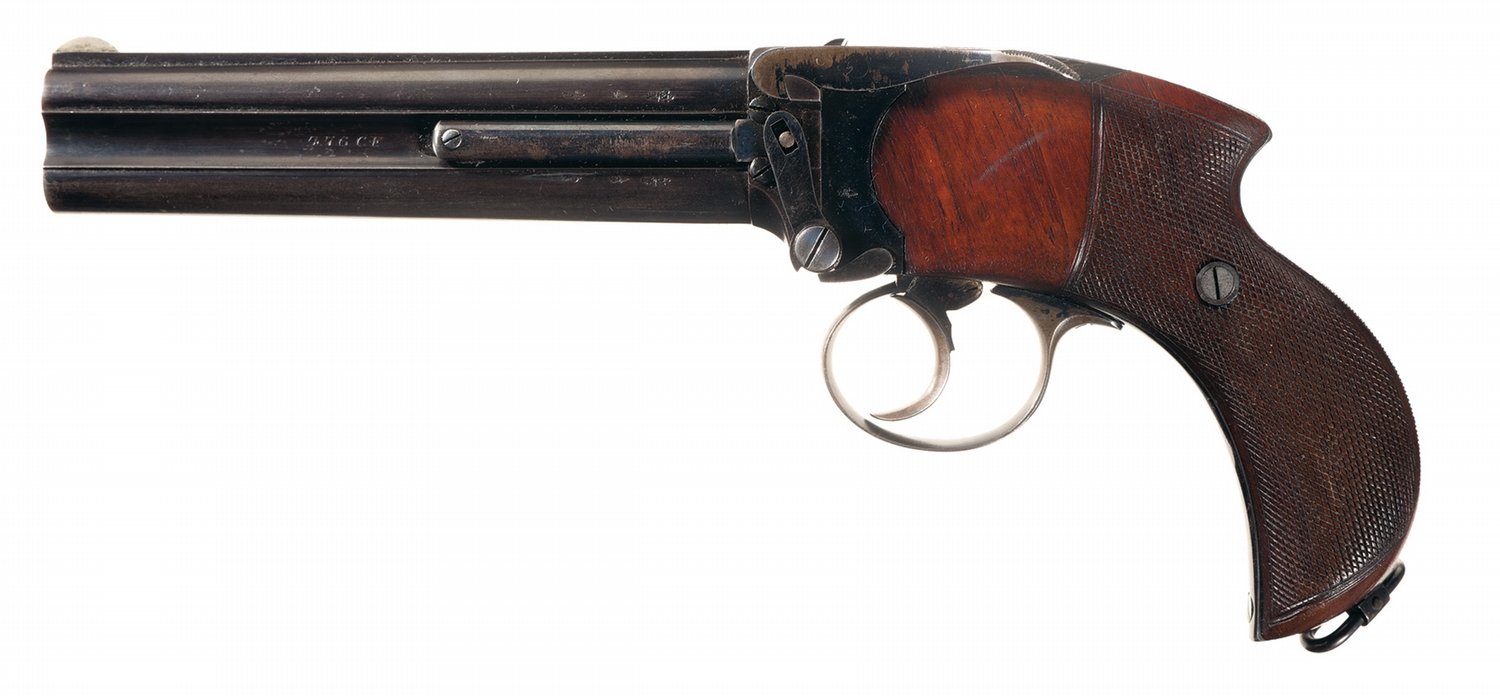
Confederate Ragnarok Rifle (Selbstlader 1906)
The Northern Confederacy, also known as the Norselands, possessed an arms company called Ragnarok. Ragnarok developed a standard rifle for their massive military. Seeing competitor pistol designs, Rangaronk found out of to transfer the automatic qualities of pistols to rifles. The CRR was the result of this. The CRR only held five rounds, but could be shot quickly and accurately. Being one of the first automatic rifles in existence, it helped the Confederacy retain its borders from other imperial nations, including Lodona. It became the signature weapon of the Confederate Raiders and the armored women brigades called Valkyries. In many ways, this weapon became more famous than those who created it. By the time of the revolution, the Norselands still had this rifle as the standard military weapon and adjusted it so that it could 10 rounds. Edward McBaine purcahsed the outdated 5-round rifles from the Confederacy, who were excited to see their southern rival for world domination fall by their own people.

Confederate "Valkyrie's Kiss" Huntress Submachine Gun (Villar-Perosa)
The Norseland Confederacy was the first nation to create submachine guns. As the world was turning to planted machine guns, the Norseland engineers were forced to go along with them. They developed the Norseland Gunner, a two-barrel machine gun that had to be mounted before use. They made them using only 25-round magazines, which made reloading them a constant, unlike the belt-fed machine guns of the Royal Army. The Seven Lords told them to change it, make it hand-held, and give it to the Valkyrie forces. They did exactly this, creating the Huntress "submachine gun." Valkyries were able to use these weapons in the mountains against Lodona forces. Because of their expensive tendencies, these guns were rare and only seen being used by special shocktrooper Valkyries.
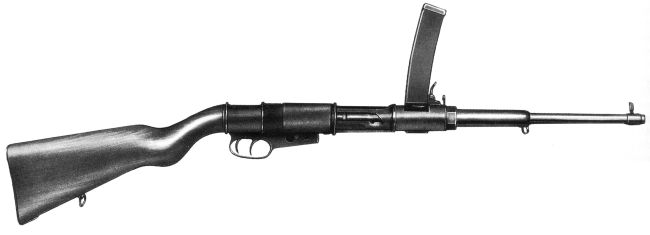
Norseland Portable Artillery (AT Rocket Gun)
This anti-armor hand cannon was one of the first anti-armor guns ever made. The constant skirmishes with the Lodona vehicles made the Norseland Confederacy adapt by creating a weapon to combat with the mechanical beasts of the mountaintops. This adaptation was the NPA cannon. The NPA was a primitive anti-tank weapon that had to be set up on a tripod before being fired effectively. In the mountains, Valkyries would set them up on high points and fire shell after shell at enemy vehicles before picking it back up and fleeing from inevitable retaliation. It became standard for Valkyries to be trained with these weapons as the mechanized warfare increased the demand for these types of artillery. The Nationalist acquired only a few of these and the Royal Army actually started to use captured ones against the Nationalist armored automobiles.
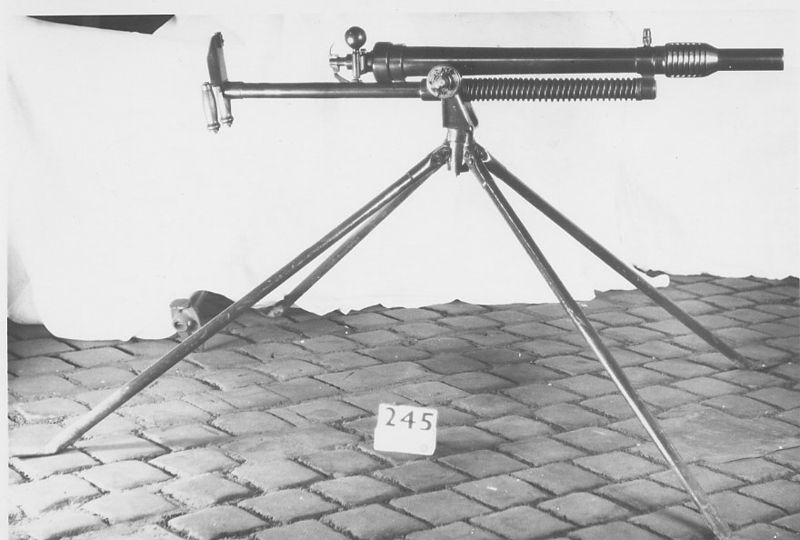
Wastelander Arklight Pistol (Frommer 1901)
In the Desert Wars, there were two main combatants: Lodona and the Eastern Republics. However, there was a third faction: The Wastelanders. The Wastelanders were the people that inhabited the Dread Deserts. Often thought as crude and uncivilized, the Wasterlanders were quite advanced for not being a imperial nation. By being the owners of oil and diamonds, their small borderless "nation" grew and prospered. Their leader, Abigail "Sandy" Arklight, a Lodona-born businesswoman, was the first person to really push the trade between the Wastelanders and the empires. She contacted the Republics and Lodona, setting up trade of oil and diamonds for steel and wood. She knew from the beginning that the Dread Deserts would be a place of constant war as it held so many precious resources for the hyper-industrialized world. So she started the Wastelander Scout program, in which she hired mercenaries to train a Wastelander military and she purchased weapons to arm them. They purchased weapons from the Norselands, Lodona, and the Republics. She also developed the first Wastelander original pistol: the Arklight Pistol. It was never sold to other countries and became the signature weapon of the Wastelander Scouts. It was not the best pistol, but it was reliable in the desert sands.
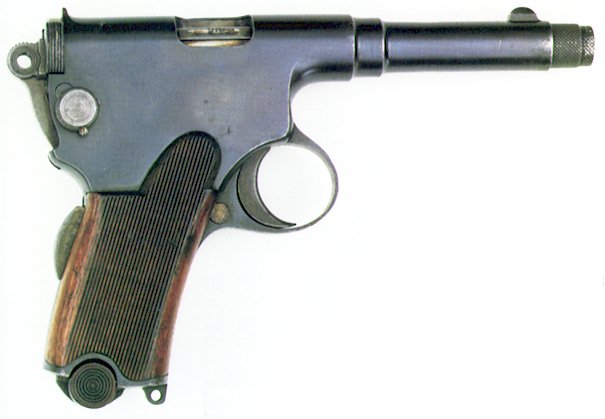
Sallian Oceania Self-loading Long Rifle (RSC-17)
The small coastal nation of Sallia, a place that was rarely seen warfare due to constant neutrality, hardly deals in weapons of war, but do have a few. Antonio Belgetti, a weapons designer from Sallia, created the Sallia standard issue rifle for their small, but resilient military. Eight years before the revolution, Sallia was still using bolt-action rifles as their main tools of defense. With tensions rising in Lodona, the country feared that if Lodona were to fall, they would have to defend themselves against the now freed colonies that crept on their western borders. Belgetti was commanded by the Sallian government to bring them up to Lodona's technology. He did that in a surprisingly small amount of time. He created the Oceania Self-loading rifle, named after the manufacturing company he worked for, Oceania. It held five rounds, using LSR ammunition, and was reloaded from the bottom instead of the top, like most rifles at the time. 30,000 were made, one for each of the Sallian Vanguard. It was a mighty success and Belgetti was honored with a Knighthood. The Vanguard used this throughout the conflicts of their imperial neighbor.

Sallian Oceania Automatic Sidearm (Salvator Dormus)
The Vanguard, the national guard of Sallia, were the only militants in the small trading nation. Their main task was to guard the Sallian Royal Family. They used a standard, iconic pistol designed by Lorenzo Masentti during Lodona's conquest of their former neighboring countries. When Sallia signed peace with Lodona, the imperial nation allowed them to create their own military if only it would never leave their borders. Sallia agreed and the Vanguard was made. Masentti designed the pistol to not only have great stopping power, but also be automatic, a rarity at the time. It was a success and Oceania produced the pistols for every Vanguard soldier. It was an old gun, but new changes were added to keep it smooth and reliable against the powerful nations that were fighting for every inch of the planet.
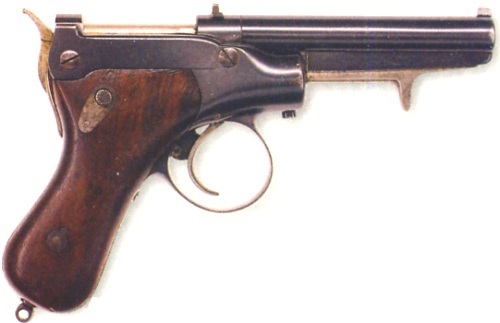
Makri Sidewinder Machine Guns (Thompson Annihilator)
The Makri, an imperialistic nation that held very remote colonies, were a mostly defensive force against the ever-growing Lodona Empire. Of the major imperial nations, they were not the most advanced, however, they did possess several clever weapons that kept them from falling to more powerful empires. The most significant of these was the Sidewinder. The Sidewinder was an automatic rifle that fired at 400 rounds per minute, but was too large to be classed as a submachine gun. It was an odd design and a unique design. It was reliable and worthy of the title, but with its expensive qualities, there were not many of these made. They were given to Makri Striders, who patrolled the borders of their homeland, picking off any foreigners who dared to come into sight. The Royal Army greatly disliked these weapons, but made no haste to copy the technology. It was evident that they could make something better in due time.
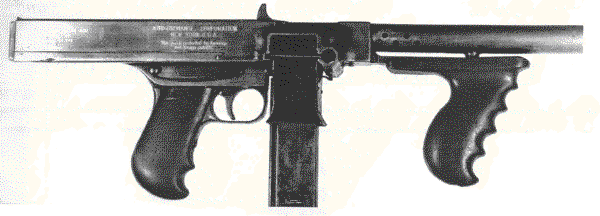
Makri Fury Rifle (General Liu Rifle)
The Makri were not the most advanced imperial country, but the Fury Rifle was their biggest accomplishment in terms of military prowess. The Fury Rifle is an automatic, 5-round magazine, standard rifle that was used by all military branches of the Makri. It was more expensive to make as the Makri did not have as many factories as Lodona or the Republics, but their army was also smaller, so they did not need to create as many anyway. This weapon was the Makri's biggest seller as well, being bought by the Eastern Republics during the Third Desert War. So many were purchased, the Makri were scared that the Eastern Republics would simply buy-out the defenses of their homeland, so in the last year of the war, the Makri pulled the weapons from the market. With the Lodona Army holding the Dread Desert successfully, the Makri thought it was only a matter of time before the imperial beast would turn her flaming eyes towards them.
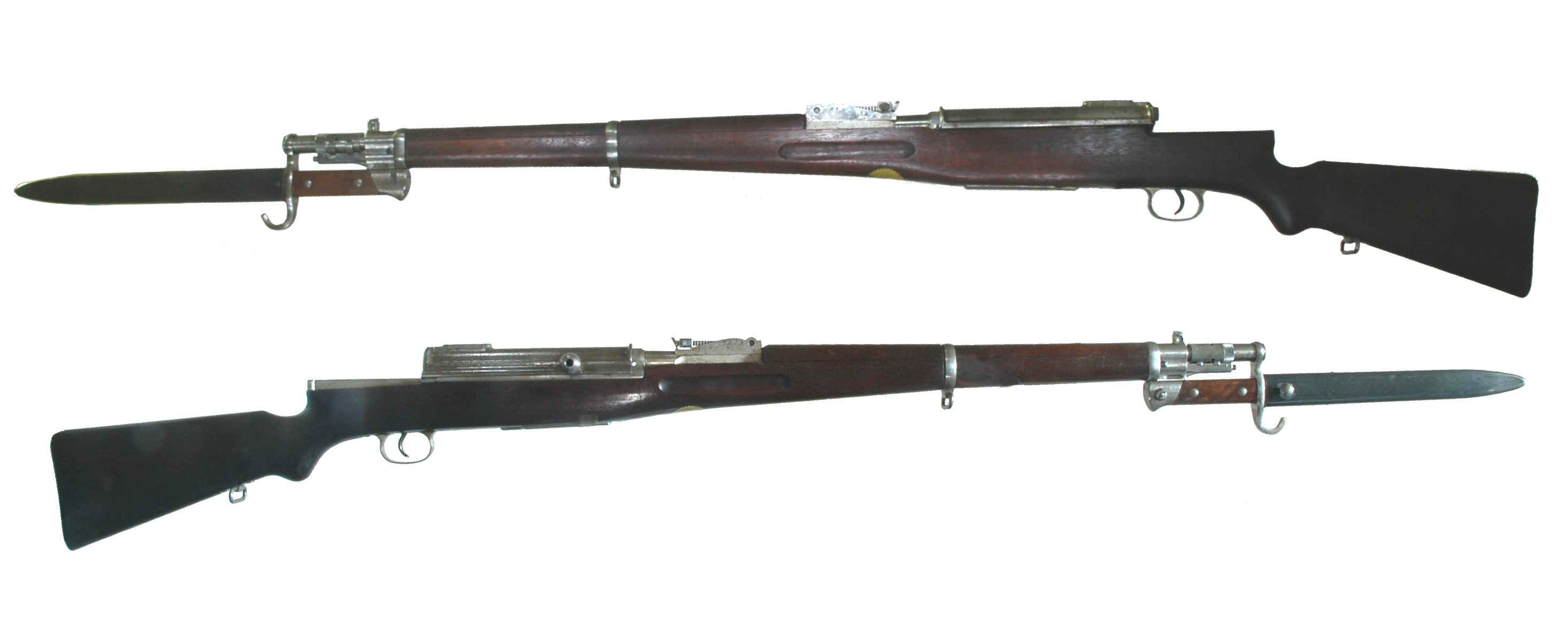
Makri Deliverer Pistol (Glisenti 1910)
One of the most prominent of Makri engineering, the Deliverer pistol was designed for the Jurrits, a mysterious class of Makri military officer. These pistols were never in prestine condition, as they struggled in the sandy deserts the Makri called home. However, it did serve its purpose as a sidearm, being more famous for its appearance than its effectiveness. It became a prominent symbol of the Makri, especially since finding other symbols of the shrouded nation was hard to come by. Western Lodonans knew the shape and high pitched shriek of the Deliverer pistols, so their stories spread eastward to the more populated side of the imperial nation. By the time the stories passed orally to Anastasia, the rumors and horror tales made the Deliverer pistol much more menacing than it ever was.
